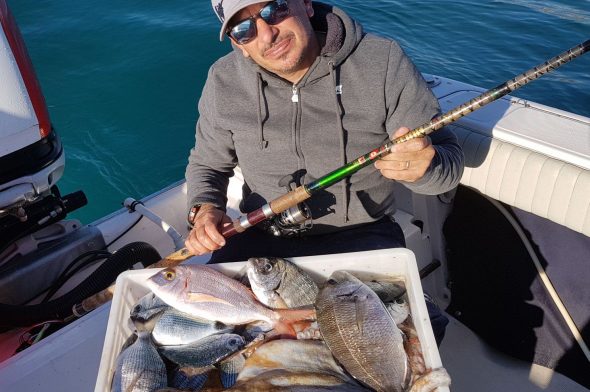Frozen fish or fresh fish? Let’s see the difference
While doing the grocery shop and walking by the frozen food section, you must have asked yourself: what is the difference between deep frozen and frozen fish? Let’s look at the difference.

Frozen fish or fresh fish? Let’s see the difference
While doing the grocery shop and walking by the frozen food section, you must have asked yourself: what is the difference between deep frozen and frozen fish? Let’s look at the difference.
To deep freeze fish you need a blast chiller capable of bring the product’s temperature down to minus 30 degrees (reaching a maximum of minus 80 degrees) to then store it at a minimum of minus 18 degrees. This type of machinery is only used at an industrial level, and not in the home.
Deep freezing is done by big businesses in order to offer a product that keeps the same freshness and nutritional value from the moment it is fished: the fast drop in temperature is fundamental because it creates very small ice crystals that impede potential microorganisms to contaminate the flesh. In addition, the packaging is also important, which must respect the very strict European health and safety provisions.
For safety, when purchasing a deep frozen fish, you should always check that the package is not covered with ice or frost: if this is the case, it means that the freeze chain was not kept intact, meaning that the product could have been compromised because of a rise in temperature. Another thing to look for is that there are no pieces of ice inside the package, this is also a result of the above.
How to cook deep frozen fish
In cooking terms, to obtain the best results, it is best to cook the fish when it is still frozen, especially if it is small fish or already cut: in this way, none of the nutritional values are lost. This is different, however when dealing with large fish. For these it is important to defrost them in the refrigerator only, at a temperature of 4 degrees, and never in warm water or room temperature. The reason is that it could get contaminated and loose, with the liquids, not only the most important nutrients, but also the taste, which was preserved by the flash freeze, could be lost.
Once defrosted, the fish can no longer be refrozen and should be eaten on the day or at most the next (keeping it in the fridge). This is because by defrosting you begin the process of deterioration that the freezer cannot stop and which could cause serious health issues.
Frozen fish
If you are fishermen, you certainly already know how to freeze fish (if you have had a good haul, you will certainly need to freeze it), but if you aren’t experts in the sector and you still want a stash of fish in your freezer it is best that you keep in mind a few fundamental rules.
Fish, as soon as it is fished or bought, must be cleaned immediately under running water, and then gutted. It is also a good idea to cut off the head and tail. Then it needs to be patted dry and placed into an aluminium or plastic container so that humidity, air, smells, or water cannot enter. Food safe plastic bags are also fine, as long as they are well closed, squeezing out as much air as possible (if you have a vacuum sealer the fish will last even longer). Lastly, they need to be placed in the freezer at a temperature of minus 18 degrees.
However, we must remember that the slow freezing of the fish in a home freezer leads to the formation of large ice crystals, which cause, during defrosting, the loss of both nutritional values and flavour. It is important to remember, in addition, that it is best to label the fish with the freeze date, and eat it within three months. After this amount of time, the fish may change taste, while after six months it should be replaced with fresher fish. Like for deep frozen fish, once it has been defrosted it should not be refrozen. In the best case scenario, you could get dysentery.
Maximiliano Ricci
Topics: deep frozen fish, frozen fish, how to freeze fresh fish



